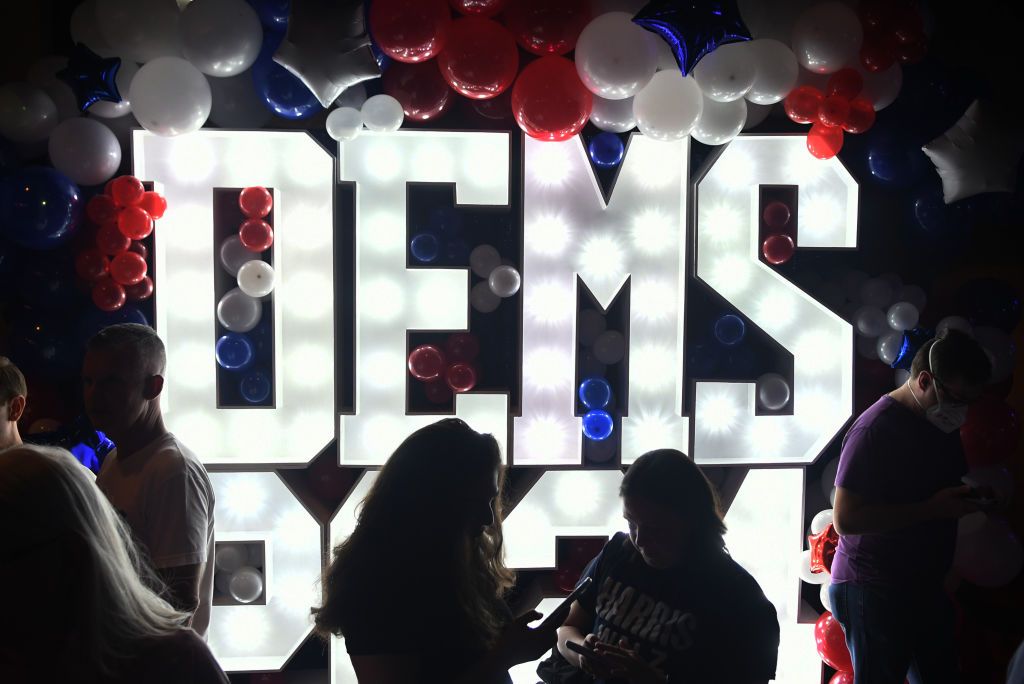After losing big in 2024, Democrats promised a digital reckoning.
But 12 months out from that devastating slate of losses, Democratic digital programs are still plagued by the same issues that doomed them last year. Despite millions of dollars in influencer investments and “lessons learned” memos, party insiders say Democrats are still stuck running social media programs that strive for authenticity, but often clash with the party’s unrelenting desire to maintain control.
“I can’t, for the life of me, figure out why we are still so rigid and moderating everything when we have nothing to lose for the first time,” says one Democratic digital strategist, who requested anonymity to speak candidly. “All of the threats of fascism and right-wing takeover. It’s all here.”
This aversion to risk has made it difficult for Democrats to innovate. In June, the Democratic National Committee launched a new YouTube show called The Daily Blueprint. In a statement, DNC chair Ken Martin said that the show—which runs news headlines and interviews with party officials in an attempt to be MSNBC-lite—“cements our commitment to meet this moment and innovate the ways we get our message across a new media landscape.”
The show, hosted by DNC deputy communications director Hannah Muldavin, has brought in only around 16,000 views total across more than 100 episodes since its launch.
“We’re focused on reaching as many people as possible, and we’ve made huge progress this year in expanding our reach,” a spokesperson from the DNC tells WIRED. “Since January, the DNC has seen enormous follower growth on high-traffic platforms like TikTok and Instagram, accruing over 3.8 billion impressions across our accounts. We are building relationships with hundreds of creators so that the Democratic Party is a constant presence on voters’ feeds, cutting across interests and backgrounds. We’re investing now in building an innovative digital program that will continue to grow cycle after cycle.”
But to some Democratic strategists, The Daily Blueprint is emblematic of how the party continues to promote its least effective digital communicators. Since the government shut down earlier this month, Senate minority leader Chuck Schumer has hosted a string of highly-produced videos that have barely registered outside of the Washington, DC, ecosystem. “If you are not willing to take swings or throw shit against the wall in this moment, then when are you going to do that?” says Ravi Mangla, the national press secretary for the Working Families Party, a small progressive party already critical of the Democratic National Committee. (Schumer’s Senate office did not immediately respond to a request for comment.)
Younger Democratic operatives say the issue stems from a broader culture of gatekeeping not just who is allowed to speak on behalf of the party, but what the content coming out of official channels looks like. The people approving content are “not young people and they’re not posters,” says Organizermemes, a creator and digital strategist. “They can’t explain why things [online] went well. Their ‘theory of mind’ is often fundamentally wrong because they don’t engage with the actual doing of it.”
This disconnect breeds frustration among the younger staffers who tend to be the people creating the content. And many of their ideas never make it to party platforms. “I’m not unfamiliar with getting 90 percent of my content that I propose shot down,” Organizermemes says. “A 90 percent rejection rate makes no sense. At that point, fire me.”
A few strategists who spoke with WIRED insist that the tides are turning in a more positive direction as the party prepares for next year’s midterm elections. “I think things are changing,” says Organizermemes. “The digital narrative has made this into an on-year election for a lot of people.”
Some Democrats have been innovating: Of the possible 2028 presidential contenders, Gavin Newsom and Pete Buttigieg have shown a willingness to appear on more nontraditional platforms. Earlier this year, Buttigieg appeared on the Flagrant podcast, hosted by comedian Andrew Schulz, which president Donald Trump appeared on last year. In October, Newsom joined Twitch streamer Connoreatspants to play Fortnite while discussing the Trump administration and Democratic messaging failures. A new generation of Democrats, including New York City council member Chi Ossé and Michigan Senate candidate Mallory McMorrow, have also worked to set new precedents in what’s expected from political digital programs.
In New York, Democratic mayoral nominee Zohran Mamdani has set new standards for what digital programs should look like going forward, creating content that mixes humor and policy in effective ways that routinely go viral outside of the New York media world.
But Mamdani’s digital and electoral success so far has highlighted not just what’s possible for Democrats online, but just how much the party fears the success it doesn’t control. “There’s a desire to diminish his effect,” says Mangla. “Because if we actually talk about how easily it would be to replicate both what he’s doing digitally and the issues he is promoting, then that’s a threat to the establishment. It’s a threat to the status quo.”
Without significantly overhauling the strategy that contributed to Trump’s return to office, Democrats fear 2026 could be a repeat of 2024.“If you are so scared of entrusting your candidate to be themselves, you need to get the hell out of Democratic politics,” says Caleb Brock, a Democratic digital strategist who is currently the director of digital strategy for California representative Ro Khanna. “And if your candidate is going to be cringe or not stick to their talking points, the American voters and the Democratic Party’s base needs to see that.”




